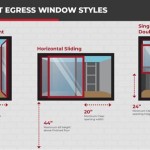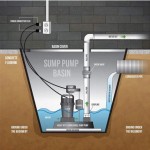Why Is There A Gap Between Basement Wall And Floor?
A gap between the basement wall and floor, often referred to as a "wall gap," is a common issue that can arise in older homes and even some newer constructions. This gap can be a source of concern for homeowners, as it can potentially lead to problems like water infiltration, structural instability, and energy inefficiency. Understanding the reasons behind this gap is crucial for effective diagnosis and repair.
Foundation Settlement
One of the most prevalent causes of a wall gap in basements is foundation settlement. Over time, the soil beneath the foundation can shift and compact, causing the foundation to settle unevenly. As the foundation settles, the walls may move inward, creating a gap between the wall and the floor. This is particularly common in areas with expansive soils, which swell and contract with changes in moisture content.
The severity of foundation settlement and the resulting wall gap can vary depending on factors like soil type, foundation design, and the age of the structure. In cases of significant settlement, the gap can become quite pronounced, and the walls may even crack or bow.
Construction Errors
Construction errors can also contribute to wall gaps in basements. Incorrect installation of the foundation or framing, inadequate support for the walls, and improper anchoring can all lead to gaps. This is especially true in older homes where building codes and construction standards may have been less stringent.
For instance, if the foundation walls are not properly tied to the floor slab, they can move independently, creating a gap. Similarly, if the framing members supporting the walls are undersized or improperly spaced, they may not be able to adequately resist the forces of settlement or other stresses.
Water Damage
Water damage can also be a contributing factor to wall gaps in basements. Water can seep into the foundation, causing the soil to swell and exert pressure on the walls. This pressure can push the walls inward, creating a gap between the wall and the floor.
A common source of water damage in basements is leaking pipes or plumbing fixtures. This leakage can often go unnoticed for extended periods, allowing moisture to accumulate and cause significant damage. In addition, poor drainage around the foundation can also lead to water accumulation and subsequent pressure on the walls.
Thermal Movement
Thermal movement, or the expansion and contraction of materials due to temperature changes, can also contribute to wall gaps in basements. In cold climates, basement walls and floors can contract during the winter months, creating a gap. As temperatures rise in the summer, the materials expand, potentially reducing or eliminating the gap.
This type of movement is usually less significant than other causes of wall gaps but can still be noticeable, especially in areas with extreme temperature fluctuations. The use of different materials for the walls and floor can also contribute to thermal movement differences.
Identifying the Cause
Identifying the cause of a wall gap is crucial for determining the best course of action for repair. A thorough inspection by a qualified professional is recommended. The inspector will examine the foundation, walls, and floor, looking for signs of settlement, cracking, bowing, and other structural problems.
The inspector will also consider factors like the age of the home, the soil type, and any history of water damage. Based on their findings, they can provide a diagnosis of the cause of the wall gap and recommend appropriate repair solutions.
Repairing the Gap
Repairing a wall gap in a basement often involves addressing the underlying cause. This may involve:
- Foundation stabilization: This involves methods like underpinning, which involves adding additional support to the foundation, or installing helical piers, which are long, screw-like anchors drilled into the ground to provide support.
- Waterproofing: This may involve sealing cracks, repairing leaks, and improving drainage around the foundation to prevent water infiltration.
- Framing repairs: If the framing is inadequate, it may need to be reinforced or replaced with stronger materials.
The specific repair methods will depend on the nature and severity of the wall gap and the underlying cause. In some cases, a simple solution like filling the gap with grout or caulk may be sufficient. However, in more severe cases, more extensive repairs may be required.

Why You Can T Seal The Gap Between A Basement Floor And Wall

Don T Seal The Gap Between Your Basement Floor Wall Everdry Toledo

Gap Between Basement Floor And Wall R Homeimprovement

Foundation Repair Interior Signs Of Problems Gap Between Floor An Wall

Floor And Wall Gaps South Bend In A M Home Services

Gap Between Concrete Slab And Foundation Doityourself Com Community Forums

Don T Seal The Gap Between Your Basement Floor Wall Everdry Toledo

Drywall Gap At Concrete Basement Floor Caulk Or Other Greenbuildingadvisor

Ayers Basement Systems Waterproofing Photo Album Sentry Seal Saves A Frankfort Mi

Basement Systems Usa Foundation Repair Photo Album Carbon Armor Solves Bowing Wall In Bear De
See Also








